Genesis GV70 Vs Porsche Macan Comparison

This is the Genesis GV70’s sternest test yet.
The Korean luxury brand’s newest (and smallest) SUV is an impressive one. The 2022 Genesis GV70 arrived this summer and immediately made an impact, leapfrogging the Japanese competition and aligning with the Germans. Its blend of unique interior design, strong tech suite, and powerful V6 engine is an enticing one. Genesis has imbued the GV70 with solid driving dynamics, too, making it genuinely fun for spirited driving.
Get a Quote on a New Genesis GV70 or Porsche MacanDriving enjoyment is something the Porsche Macan has had on lock since it arrived on the scene. It remains the yardstick for the segment, so we had to stick these two together as soon as the opportunity presented itself. Just how good is the GV70 as an overall package? We had a week to find out, with a 3.5T model taking on Porsche’s mid-level Macan S. Game on.
Editor’s Note: this particular Macan S is a pre-facelift 2021 model, plucked from Porsche Canada’s internal fleet. We drove the ’22 Macan S immediately after this comparison ( read the review here), and will share important changes between the two in the relevant sections.
Interior and Cargo Space
GV70: Popping open the door of the GV70 is like walking into the lobby of a fancy hotel. There’s mood lighting, lots of genuine carbon fiber, and a pair of terrific-looking quilted leather seats. Sure enough, they’re mega-comfortable, with plenty of back and lower leg support. The dashboard design is minimal, with thin ovals of chrome encompassing most controls. The slimline vent design wraps around to the doors and over the instrument cowl, tying the design together. Sport models like this tester swap in a more traditional three-spoke steering wheel design. The knurled dials, including those on the wheel-mounted stalks, all move with a satisfying click. Rear seat passengers don’t miss out on the quilted leather goodness, either.
Front headroom clocks in at 39.6 inches (1,006 mm), while legroom is a generous 41.3 inches (1,049 mm). Genesis says the GV70 has the most rear legroom in its class, and the 37.2 inches (945 mm) does feel plenty roomy for this 5’10” writer. The stylish sloping roofline does eat into headroom slightly, but we’re only talking a half-inch (12 mm) less than the front. The chunky C- and D-pillars do make it quite dark back there though, not to mention the impact on driver visibility.
The GV70’s long length (185.6 inches / 4,715 mm) contributes to a healthy cargo haul of 28.9 cubic feet (818 liters). Drop the second row seats and that nearly doubles to 56.9 cubes (1,611 L).
Macan: If the GV70 is a swanky hotel, the Macan is an office. A well-built one, sure—we wish there was this much leather at work—but its a much more straight-forward environment than the flashy GV70. The dashboard design is squared off and minimal, no doubt to accommodate the 10.9-inch screen embedded within. A substantial center console houses all manner of buttons flanking the shifter. It’s a cool Mission Control sort of vibe, but the black plastic looks a little low-rent in this setting. (Editor’s note: a more modern haptic touch setup takes over in the ’22 Macan.) The seats may not be quilted, but they’re heated and ventilated like the GV70’s thrones, and are deceptively supportive. The driving position is pitch-perfect, with the thin, small-diameter steering wheel framing the classic Porsche dials ahead. What’s wrong with a little old-fashioned?
SEE ALSO: 2022 Genesis GV70 Review: First DrivePorsche doesn’t quote head- or legroom measurements for the Macan. Front passenger space is largely comparable to the GV70, with the relatively low seats maximizing head room. The rear seats are noticeably tighter, however: just slightly for headspace, but significantly for feet. Adults will fit back there, but they may not like it for long distances, especially if the driver is taller than this writer. At least the large panoramic roof lets plenty of light in, and the Macan’s clean window line aids visibility.
It should come as no surprise that the smaller Macan can’t match the GV70 for hauling stuff. The 17.6 cu-ft (498 L) behind the rear seats is still plenty for a weekend away, and that expands to a healthy 52.9 cu-ft (1,498 L) if you’re running the Macan in two-seat form.
Bottom Line: This is a tough category for the Macan to start on. Its interior is put together well, but it feels old-fashioned and lacks the sense of occasion found in the GV70. Even the 2022 Macan S, with its haptic center console controls and cleaner interface, couldn’t win here. First blood goes to the GV70.
SEE ALSO: Porsche Taycan vs Tesla Model S ComparisonTech and Features
GV70: The GV70 comes standard with the 14.5-inch infotainment screen Genesis debuted on the 80-series models last year. The tile-based system is easy to learn, though the screen can be a bit of a stretch for the driver, particularly the far side. Thankfully, Genesis includes a handy redundant rotary dial in the center console. It’s now raised, like the gear shifter, based on user feedback of the flush setup in the GV80. Personally, I preferred the original. This dial may be easier to grasp, but it’s also practically identical to the shifter when going by feel alone. An industry-first fingerprint scanner sits on the dashboard, allowing drivers to use the car without a key.
Genesis includes a whole bunch of other tech here, too. A head-up display is most welcome, providing important information clearly in view. Look just below it and there’s the trick 3D instrument cluster. Some will no doubt turn it off, but we enjoy how natural the projection works.
A full suite of driver assists comes on every GV70, including automated emergency braking, lane-keep assist, lane departure warning, blind-spot warning, adaptive cruise control, and more. Higher models like this top trim tester also include Genesis’ Blind-View Monitor, which temporarily replaces a dial in the instrument panel with a live camera feed when a turn signal is active. A 360-degree camera is also standard.
There’s also a rear seat reminder, which uses radar sensors and is apparently sensitive enough to detect a baby breathing.
SEE ALSO: Genesis GV80 vs BMW X5 ComparisonMacan: Porsche’s PCM infotainment system may not be the newest kid on the digital block, but it’s still an intuitive enough sysem. The main issue is that it’s only the touchscreen: the small main menu buttons on the left can be hard to poke properly when on the move. Rough road? Yeah, forget about it. Porsche has also stuck with analog dials for two-thirds of the instrument panel, compressing all the customizable info to a small, round section on the right. That’s okay; both the instrument panel and central screen respond quickly to inputs. Porsche’s native navigation system is a strong one, too, with clear instructions and easy-to-read maps.
We’d love to tell you how the Macan’s head-up display or other tech matches up to the GV70’s, but … that’s about it. The Bose sound system is solid, but it can’t match the 18-speaker Lexicon system’s power nor its clarity.
Another area the Macan lags behind is the standard safety and driver assists. You’ve just got a lane-departure warning, which itself is hard to pick up on. The sound it plays does not suggest a warning, at least to these ears. Even automated emergency braking is optional, as are adaptive cruise control, lane-change assist, and parking sensors. The latter two are present here.
Bottom Line: Another category where the youngster has the upper hand. The GV70 is dripping with tech, from its easy-to-learn infotainment system to the cool 3D instrument cluster. There’s a certain comfort in using the console-mounted buttons in the Macan instead of fiddling within a touchscreen menu, but that’s not enough to save it. Another point for the GV70.
Powertrain, Driving Feel, and Fuel Economy
GV70: This GV70 comes equipped with Genesis’ 3.5-liter turbocharged V6. It’s a powerhouse of an engine, producing 375 horsepower and 391 pound-feet of torque. The latter arrives early and sticks around for most of the rev range, shoving the GV70 down the road with conviction. Throttle response is slightly lazy in the standard mode, but that changes quickly in Sport mode. The GV70 is noticeably more eager here. The eight-speed auto responds in kind, kicking down quickly when asked, and holding gears longer. There’s even a decent growl from the two round exhaust tips out back.
The steering has a positive, consistent weight to it, increasing driver confidence no matter the drive mode. Genesis has dialled in a rear bias to its AWD system, which gives the GV70 a playful balance in corners. Switch over to Sport Plus and it becomes a little too aggressive, however, feeling brittle on all but the smoothest stretch of road. Body roll is kept in check, but the Genesis feels its hefty curb weight in these situations.
Dial things back and the GV70 is a natural cruiser. The 21-inch wheels might have you pre-emptively wincing, but Genesis’ clever predictive adaptive suspension scans the road ahead, preparing for bumps before they happen. It makes for peaceful progress, especially since there’s little road and wind noise. The adaptive cruise control works very naturally too, and the blind-spot warning system can scan two lanes away, making highway lane changes that much safer.
The big engine will cost you at the pumps. Genesis quotes a 21-mpg average (1 mpg better than the Macan), but we struggled to match that during our week with the GV70.
Macan: The 2021 Porsche Macan S uses a 3.0-liter turbocharged V6 shared with Audi. Quoted figures of 348 hp and 354 lb-ft put it slightly down from the GV70, but the petite Porsche is lighter, so the straight line fight is pretty much a wash. It’s a good engine: a little late to wake up low down, but then a surprising willingness to rev right up to redline. Porsche has spent years perfecting its PDK transmission, and the seven-speed unit here is a great example. It gives up little if any low-speed refinement to the GV70’s slushbox, and can peel off shifts quicker.
As good as the engine is, it’s the steering that stands out most in a Macan. Quick and consistent, the small-diameter wheel offers up consistent weight and detailed feedback. This tester features a refreshingly simple spec, too: no air-suspension, PASM, torque vectoring, or Sport Chrono pack here. The passive steel springs strike a pitch-perfect balance between sporting intentions and daily-driver necessity. Body roll is minimal as the Macan works that Porsche magic, shrinking around the driver and feeling a solid few hundred pounds lighter than it is.
SEE ALSO: 2022 Porsche Macan S First Drive Review: Refining a Winning FormulaWhen it’s not busy reaffirming our love of twisting tarmac, the Macan can play the role of everyday errand-runner with conviction. The suspension irons out most road imperfections without transmitting them into the cabin. There’s more wind and tire noise than in the Genesis, however.
The EPA rates the Macan S at 18 mpg city, 24 mpg highway, and 20 mpg combined—1 mpg worse than the GV70 in every measure. In practice, however, it did much better than the Genesis, consistently averaging closer to its highway rating.
Bottom Line: Even running the old 3.0-liter engine, the Macan S is the clear victor here. The steering is full of feel and weight, and the chassis balance is good enough to embarrass some hot hatches out there. Even with its inherent athleticism, the Macan doesn’t punish driver or riders when it’s not having fun.
Styling
GV70: You know how couples tend to start looking like one another after they’ve been together for a while? Parking the GV70 and Macan together drove home how similar these two are, at least in basic shape. The GV70 applies the brand’s twin-line motif to a different canvas here, and the result is a striking little luxury rig. It has real presence, and we’re big fans of the Barossa Burgundy paint of this tester.
Macan: Age and ubiquity might dull the impact of the Macan—not to mention this tester’s low-key spec—but it remains a handsome shape. Like the GV70, the Macan splits the difference between upright box-on-wheels and the “coupe-over” shape the rest of the Germans are peddling. It’s a stylish compromise. Our favorite feature remains those deliciously three-dimensional taillights.
Bottom Line: It’s a tough call: the GV70 is all shiny newness, whereas the Macan, well, looks like a Porsche. Both offer some adventurous exterior color choices and a wide range of personalization. As ever, styling is subjective.
SEE ALSO: Jeep Wrangler vs Toyota 4Runner ComparisonPricing and Value
GV70: For the all-too-reasonable sum of $42,045 ($49,000 CAD), including destination, Genesis will sell you a “base” GV70 four-cylinder model. Even this standard trim comes with AWD, 18-inch alloys, powered tailgate, and LED exterior lighting. Inside you’ll find the 14.5-inch touchscreen, a wireless charger, heated front seats, and fingerprint scanner. Genesis also includes nearly every one of its driver assists, only leaving the Blind-Spot View Monitor and parking collision-avoidance assist for higher trims.
The V6 model starts at $53,645 ($68,500 CAD). Our top-rung tester bumps that figure to $64,045 ($75,500 CAD), but crams in pretty much everything Genesis can throw at it. We’re talking 21-inch wheels, a suede headliner, rear electronic limited-slip differential, and front seat ventilation and rear seat heating. A surround-view monitor, head-up display, 3D instrument cluster, and the 18-speaker Lexicon sound system round out the tech upgrades.
Macan: A completely base-spec Macan will set you back $53,450 ($59,300 CAD). Like the GV70, that means standard AWD and a four-pot engine; in this case, a 2.0-liter putting down 248 horsepower and 273 lb-ft of torque (up to 261 and 295, respectively, for 2022). 18-inch wheels are standard too, along with LED exterior lighting and a powered tailgate. Porsche’s 10.9-inch touchscreen is the same regardless of trim, as is the hybrid digital/analog instrument panel. You’ll only find lane departure warning in the standard safety assist lineup though; everything else is an optional extra.
A Macan S like our tester starts at $61,550 ($67,100 CAD). This one took a fairly short trip through the options list, sticking to the Premium Plus Package ($7,100 / $8,110 CAD), which includes 14-way power seats, the Bose sound system, seat heating for both rows along with ventilation for the front, Porsche Entry & Drive, parking sensors, and a panoramic roof. Add in some aesthetic changes, and the grand total is $75,070 ($83,130 CAD).
Editor’s Note: The 2022 Macan lineup now starts from $56,250 ($60,000 CAD) and $66,750 ($72,100 CAD) for the Macan S. The increases are balanced out with more standard kit and more power.
Bottom Line: It’s no contest here. The Genesis undercuts the Porsche despite offering so much more features. We hesitate to call a car at this price a deal, but, well, the GV70 is a deal.
SEE ALSO: Mercedes-AMG GLB 35 vs Mercedes-Benz GLC 300 ComparisonVerdict: Genesis GV70 vs Porsche Macan Comparison
If you’ve come to this section suspecting the Genesis pulled it off, congratulations: you’re right.
The Macan can hold its head high, however. While it may not have the tech or value-for-money the newcomer does, it continues to be the driver’s choice of the segment. The 2022 model’s new engine only reinforces that truth. There’s also the undeniable cachet of that Porsche shield on the nose. We don’t even really mind the tighter rear quarters: if space is a concern, there’s the Cayenne and GV80.
As an overall package, the GV70 just hits more high notes. The interior feels special, and the amount of tech would be overwhelming if it wasn’t so user-friendly. That V6 is a hard charger—the gas bills prove it—paired to a well-judged chassis, as capable of shuttling people as it is deconstructing a backroad. That all this comes in for the starting price of the Macan seals it. The GV70 doesn’t just stand toe-to-toe with the Germans: it can beat them.
Become an AutoGuide insider. Get the latest from the automotive world first by subscribing to our newsletter here.

Kyle began his automotive obsession before he even started school, courtesy of a remote control Porsche and various LEGO sets. He later studied advertising and graphic design at Humber College, which led him to writing about cars (both real and digital). He is now a proud member of the Automobile Journalists Association of Canada (AJAC), where he was the Journalist of the Year runner-up for 2021.
More by Kyle Patrick



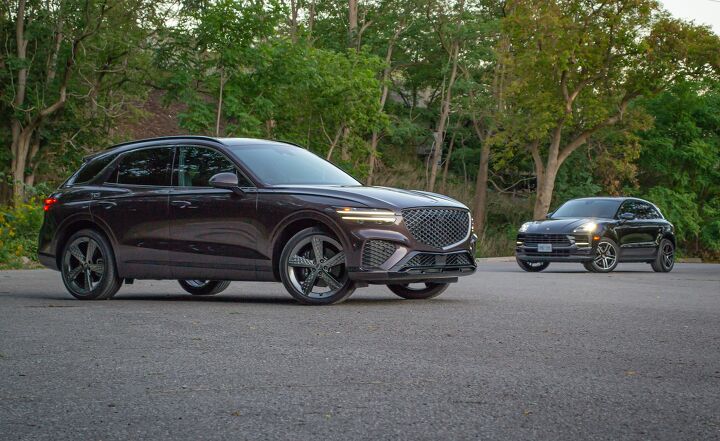































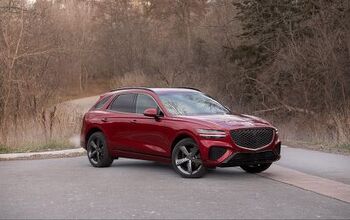
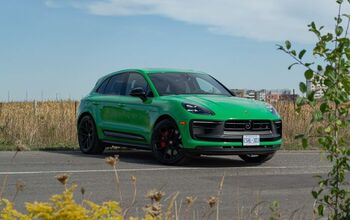
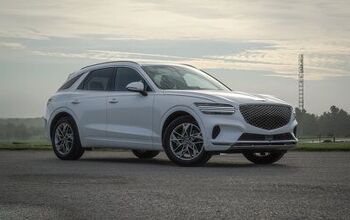
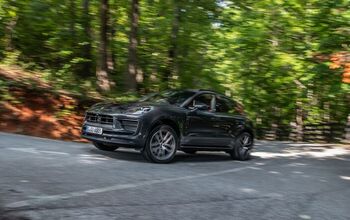

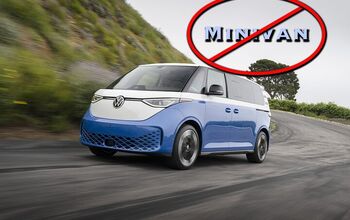
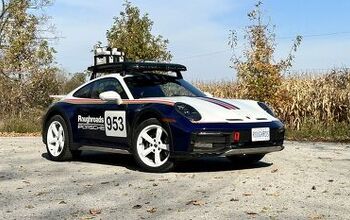
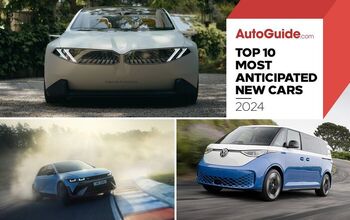

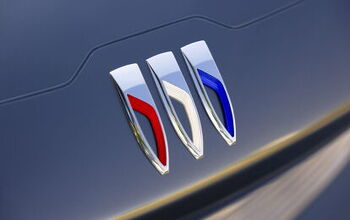
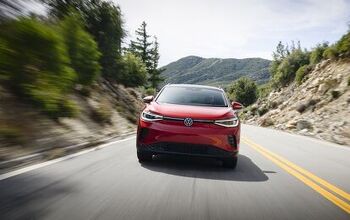
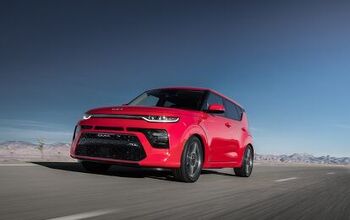

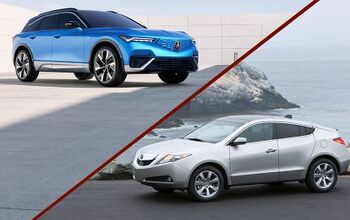
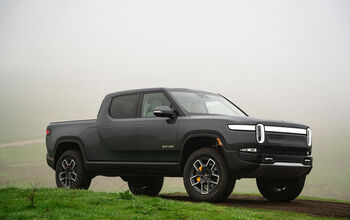
Comments
Join the conversation